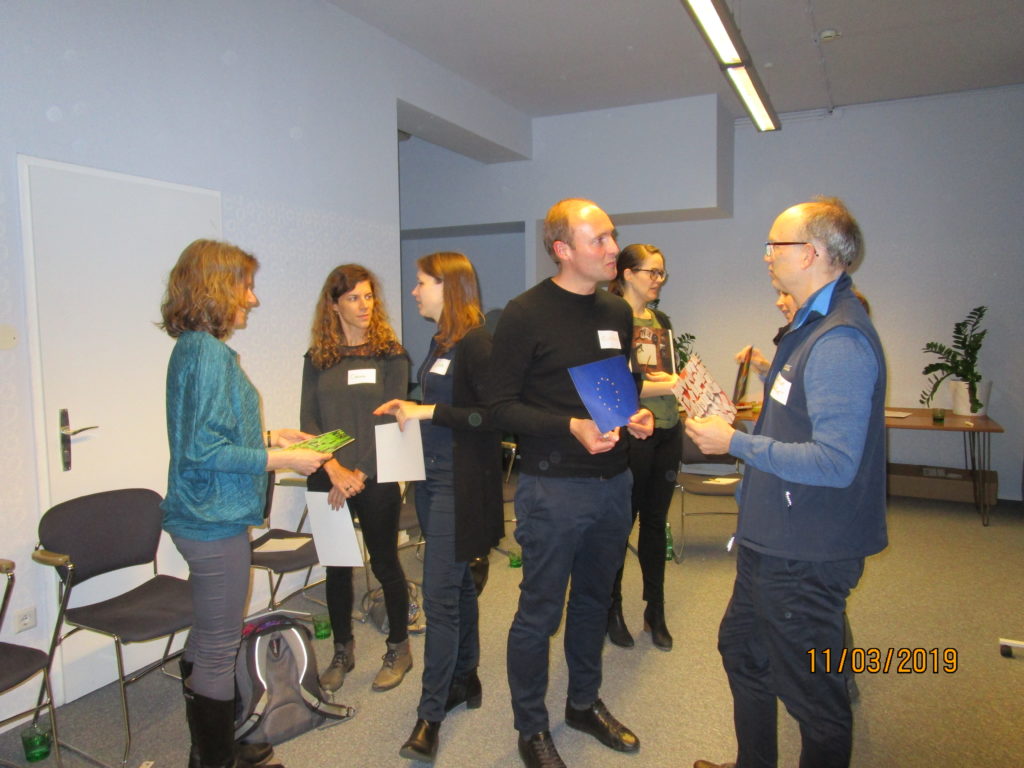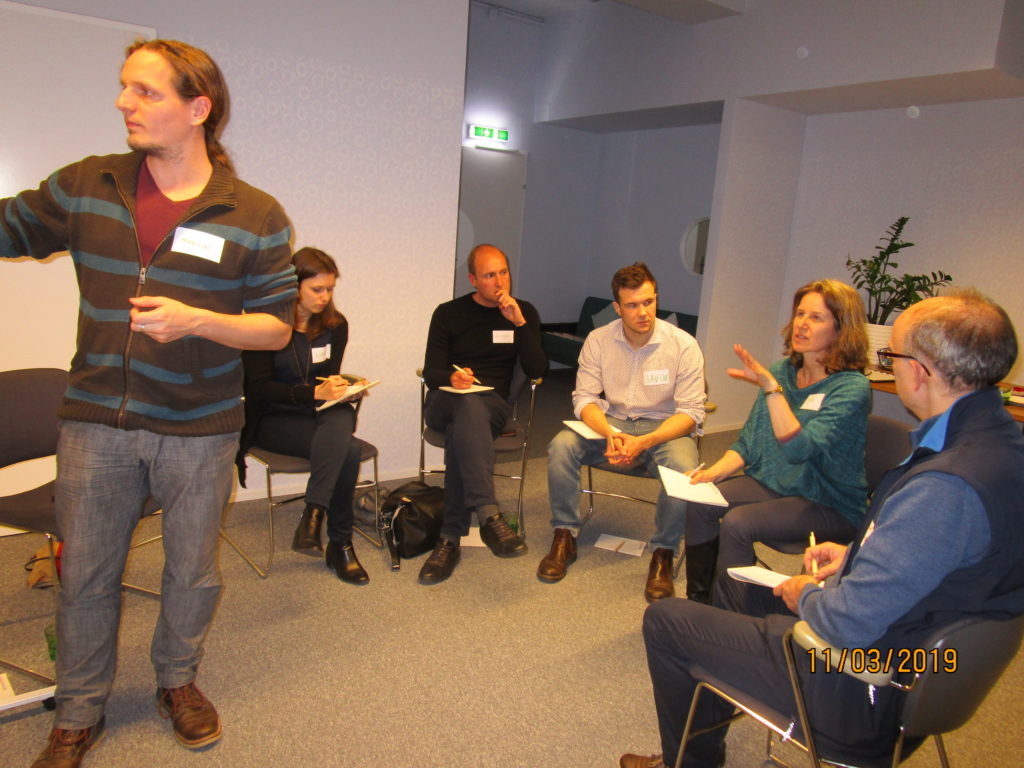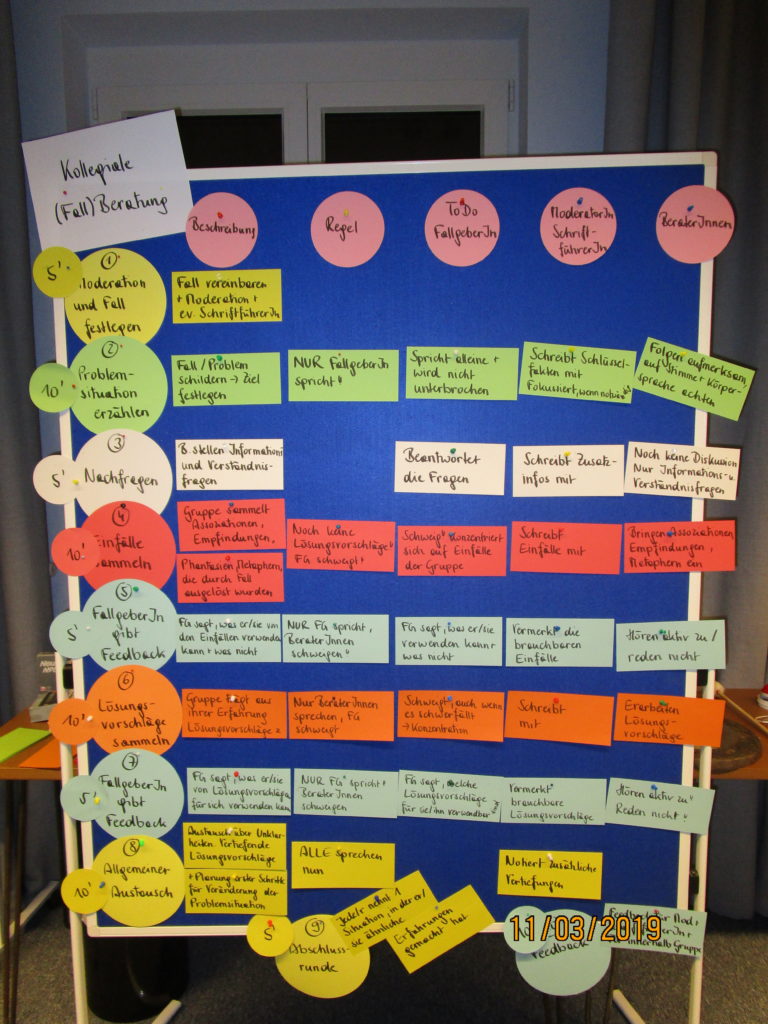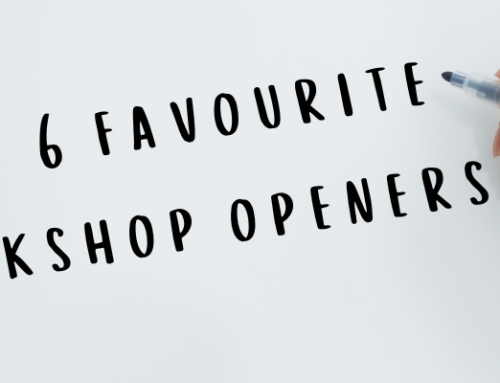The 3rd BusinessMind Alumni Lounge: Peer-to-Peer Case Review – 10 steps towards solving the problem, aka “Stargates, Scribes and Traces in the Sand.”
“It was a great evening! It once again astonished me how a good solution can be arrived at using a simple but strictly structured method, without straying from the topic or getting bogged down in details. “ Florian Wiesinger (International Media Relations, Wien Tourismus)
„For me, the method was a very efficient way to the solutions I’ve been looking for. It is very valuable to have an opportunity to leverage the experiences of a colourful “consulting team” from a variety of professional backgrounds. I found the step-by-step process we used to approach the goal very helpful. Also the instructions not to interrupt the consultant or consulting team as they presented their ideas, and to resist immediately commenting on what was said, was hugely useful for the process and above all the outcome. Thanks to you all!“ Ute Gigler, Coaching Moves
Birgit‘s Alumni Lounges are pure inspiration and motivation! In true Birgit style we experienced, tested and applied the “Peer-to-Peer Case Review” method ourselves, clearly, intensively and to the point. An efficient concept that enables Alumni to stay on the ball and integrate the newly learned methods directly into daily work life.”_ Carina Schneider, Wien Tourismus
On the evening of March 11th 2019, as always between 5:30 and 8 pm, the 3rd BusinessMind Alumni Lounge took place. 12 communicative and eager to learn BusinessMind Alumni once again attended! This time we met in the blue salon of the great magdas Hotel in Vienna 1020, and tackled the topic „Peer-to-Peer Case Review”.
(If you don’t know magdas Hotel yet, you can read about the concept here. But a few words in advance: in magdas Hotel (an erstwhile sick ward) people from over 15 nations and a multitude of different histories work there – many of them with refugee backgrounds. The Hotel makes it possible for these people – who we all know don’t have it easy finding work or permanent employment. The concept is based on the principle that SPECIALLY people who come from foreign countries make the hotel’s business strong. It is they who contribute the skills, languages and talents responsible for the hotel’s special position in the market. Moreover, magdas very actively pursues upcycling. Much of the furniture and fittings used to have other functions, and are now “upcycled” i.e. .re-used.
But now to the “Peer-to- Peer Case Review” method. The Peer-to-Peer Case Review is a method in 10 steps, in which like-minded professionals look for a solution to a specific problem, i.e. “case” together.
The case owner describes the situation to the peers, who act as consultants, and obtains advice from them. The consultants do not have to be directly connected with the case. Generally, a solution is found despite – or perhaps BECAUSE of – the involvement of “strangers to the case.”
First of all, there was a warm-up as always, of course. This time with a variety of different pictures/photos, from which everyone chose one to represent themselves. There were stargates that opened up ways to new worlds, erratic traces in the sand and EU flags promising hope of cohesion in times of disintegration.

But then it went straight to medias res – as we know, time is precious.
The first steps to solving the case
In the first step (5 min) a moderator – and possibly a secretary, i.e. Scribe – have to be appointed.
In the second step (10 min) the case owner describes the case and explains it as precisely as possible. During this step, ONLY the case owner speaks and may not be interrupted under any circumstances. An opportunity to ask questions comes in the next step!
It is essential to heed this. Even the tiniest question is already an act of intervention, and can influence what is being said. If you are just dying to ask, then write your question down – you’ll be allowed to ask it in the next round!
The audience also pays attention to the case owner’s pitch and tone of voice, body language, the sequence of information and their own feelings in regard to what is said. Everything is noted down. The moderator, too, makes notes of the key factors and ensures that the case owner does not go off on a tangent (don’t broach new topics, stay nicely on track!).
In step 3 (5 min) questions may finally be asked. Information and comprehension questions are allowed. Discussions, on the other hand, are not. The aim here is to get a complete picture of the case and to gather all the necessary information for the upcoming consultation.

Scribe Marvin notes down the most important points.
Getting down to the nitty-gritty
In step 4 (10 min) it gets exciting. In a group, the consultants discuss the case, describe their impressions to each other, generate associations, collect the first ideas.
The case owner sits a little off to the side, listening and making notes. And even if it’s hard not being able to amend what was said straight away, he or she must remain silent and concentrate on the group’s input.
In step 5 (5 min) the case owner may give the group his/her feedback as to which of the ideas, thoughts and considerations brought forward he/she can use in the case. The consultants actively listen but do not answer.
This then leads to a further discussion round between the consultants (step 6, 10 min), which, based on the case owner’s feedback, is now more detailed than in the first round. And this is when it specifically gets down to proposing solutions. Again, the rule is: the case owner remains silent, listens and makes notes. The moderator also takes down the most important points.
In the 7th step (5 min) the case owner again delivers feedback, before a general discussion takes place in step 8 (10 min) to clarify any remaining points. Solutions take shape and the first steps towards changing the problem situation are defined.
In a closing round (step 9, 5 min) every member of the group names one situation in which they had a similar experience. This round both disengages and unites the group.
In the tenth and last step (10 min) there is a feedback round for the moderator, the scribe and the case owner. Potential further rounds are agreed on.

Last but not least..
The Peer-to-Peer Case Review was well-received by all alumni, as it makes it possible to take a different point of view while the clear rules and time frames enforce sufficient listening and speaking. This was something both roles – case owner as well as consultants – were unaccustomed to at the beginning and it really wasn’t easy, but made it all the more exciting and productive in the doing.






Leave A Comment